Series: After-School Daibenkyo
Chapter 1: Haku (Metal Leaf)
Rooted in Kanazawa, the city of its founding, Tesera seeks to bring traditional craft techniques into the realm of contemporary design and manufacturing. In collaboration with Daibenkyo Magazine—a periodical published in Japan’s Hokuriku region—Tesera introduces a new serialized feature titled After-School Daibenkyo.Daibenkyo is a cultural magazine that explores the intelligence of everyday life—learning through the interconnected worlds of clothing, food, housing, and travel. Together, the two explore the harmony between Japan’s enduring aesthetic sensibilities and Tesera’s creative philosophy, giving form to a new expression born from their intersection.
*This article is based on a piece originally published in Daibenkyo Issue 6.

Tesera’s furniture embodies a quiet flexibility—designed to adapt naturally to the evolving needs of its users. Through the rearrangement of components, the addition of new elements, or subtle shifts in size and function, each piece can take on an entirely new form, responding fluidly to the moment.This philosophy is deeply rooted in the lifestyle aesthetics of Kanazawa: the harmonious rhythm of its machiya townhouses—minimal yet richly functional; the fluid boundaries created by shōji and fusuma sliding screens; and the enduring practice of repairing and reusing what one already owns. By reinterpreting these traditions in a contemporary context, Tesera creates furniture that carries both innovation and continuity.Actively engaging with Ishikawa’s traditional craft techniques and materials, the brand continues to build a bridge between heritage and modern living. For its collaboration with Daibenkyo, Tesera produced a special edition featuring frames adorned with pure gold-platinum leaf, crafted in response to the magazine’s vision. Rather than replacing furniture as life changes, Tesera proposes a gentler rhythm—one of transformation, renewal, and lasting use.
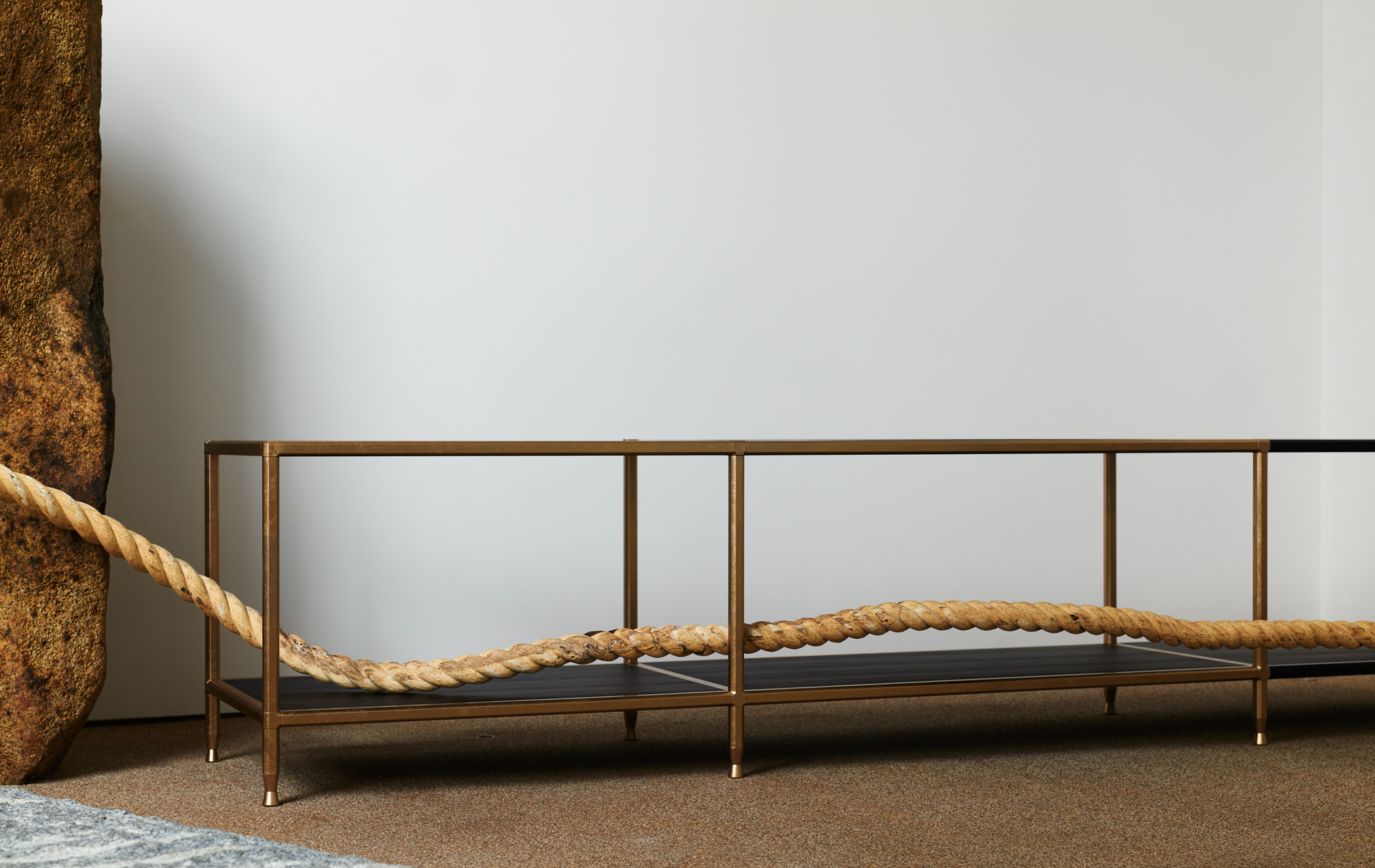
Lowboard – Mr. Daibenkyo’s Okinimesu Style Edition Special edition featuring the “Kuon-iro” pure gold-platinum leaf Mr. Daibenkyo refers to the editor-in-chief of Daibenkyo magazine, Mr. Yoshihito Sakaya of Phaeton.
This bespoke piece, created exclusively for Daibenkyo, features frames adorned with precious metal leaf.

Since ancient times, gold leaf has been made by alloying gold with small amounts of silver and copper to enhance its malleability.In Kanazawa, the company Hakuza has developed its own unique alloys: “Towa-iro,” composed of 99% pure gold and 1% platinum, and “Kuon-iro,” composed of 92% pure gold and 8% platinum. These materials allow the radiance of gold to be expressed even in outdoor environments.
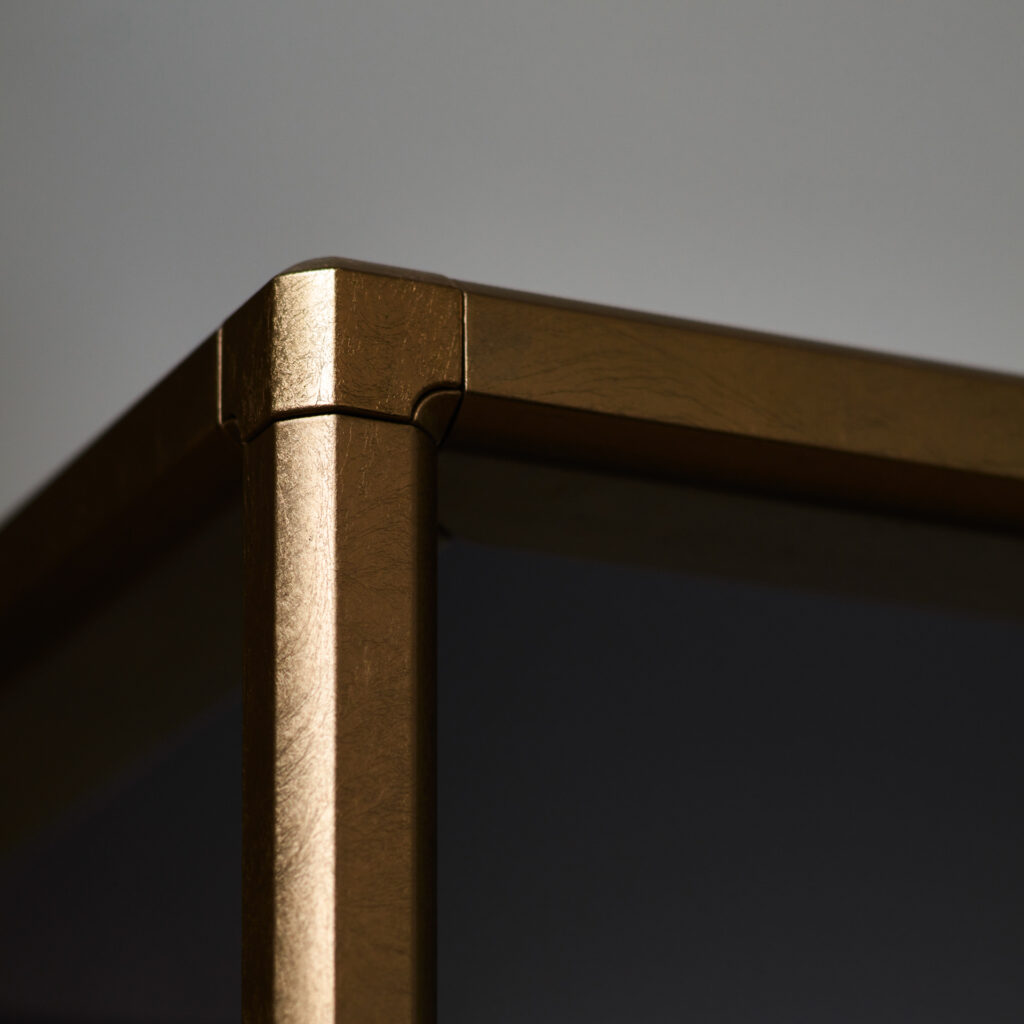
The Kuon-iro gold-platinum leaf applied to the lowboard’s frame reveals a delicate interplay between brightness and shadow, producing a quiet, refined shimmer. Its surface gently catches the light, while the subtle gaps and curved details—designed to let light and air flow through—speak to the depth of craftsmanship behind its creation.
In metal leafwork, a fine line separates the extravagant from the elegant—true mastery lies in balancing the two.
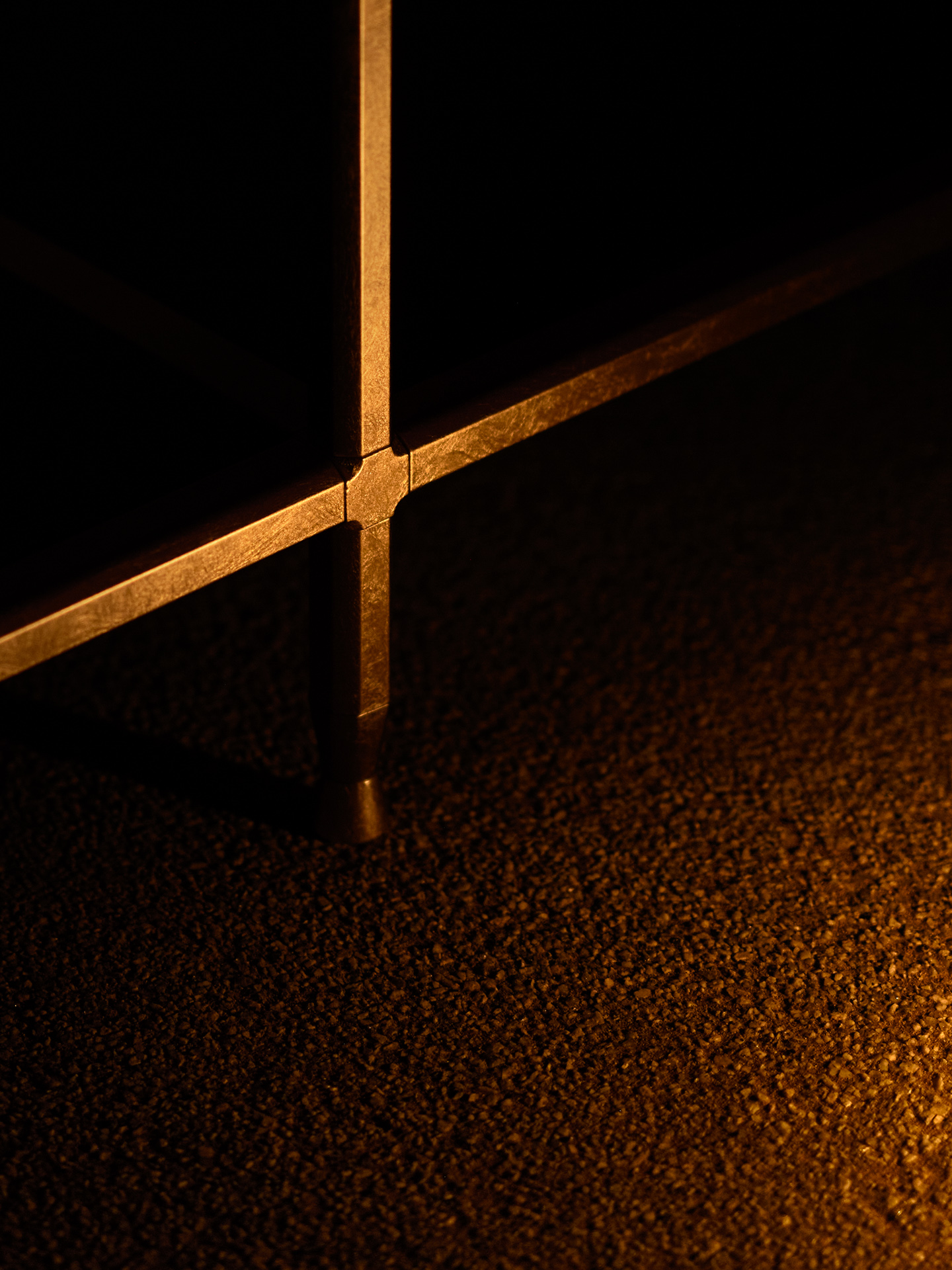
The joints of the lowboard, finished in Kuon-iro, emit a gentle glow under candlelight. One can imagine that Toyotomi Hideyoshi—the powerful 16th-century warlord who unified Japan—might have admired a similar radiance in his famed gold-leaf tea room of the Azuchi-Momoyama period, an age celebrated for its bold and luxurious aesthetic.
Gold leaf, with its subtle sheen and supple texture, is a material of infinite expression. Though it often evokes images of Buddhist statues or lavish ornamentation, in truth, gold leaf exists in a wide range of tones—joined by silver, copper, platinum, and aluminum leaf—each possessing its own distinct character and color.
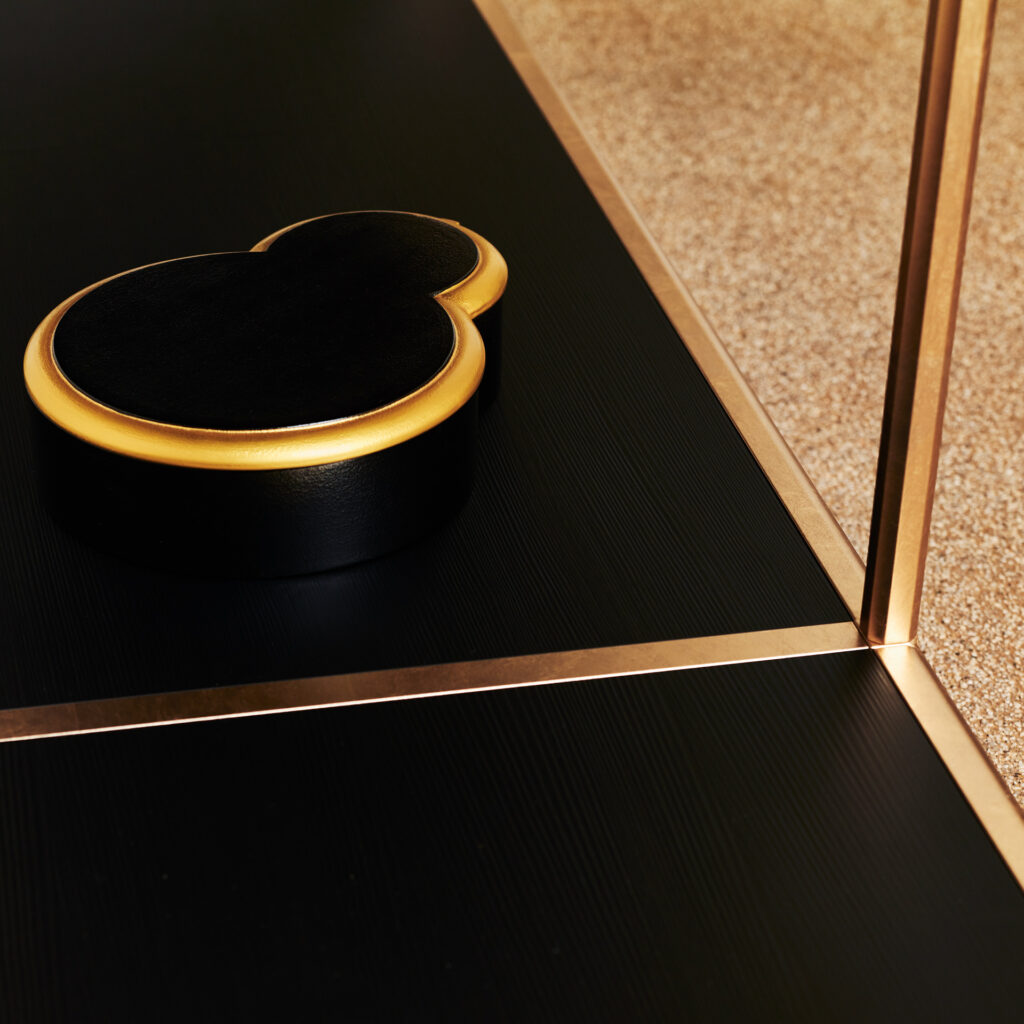
Gold leaf is made by sandwiching an alloy between special papers called hakuuchi-gami and hammering it repeatedly until it becomes extremely thin. In Japan, there are two primary production methods: Entsuke Kinpaku, the traditional hand-crafted approach, and Tachikiri Kinpaku, a modern method developed for efficiency.The Entsuke technique, which dates back over 400 years, involves meticulous preparation. The paper is made from gampi fibers soaked in lye from straw ash, then mixed with persimmon tannin and egg before being cured for six months. The process is so crucial that craftsmen once said, “If there’s a fire, save the paper first.”Recognized by UNESCO as an Intangible Cultural Heritage, this traditional technique remains essential in the restoration of Japan’s cultural treasures—including landmarks such as Kiyomizudera Temple and Nishi Hongwanji Temple.
Dialogue: Takehiko Uchida × Yushito SAKAYA
Furniture is a collection of details
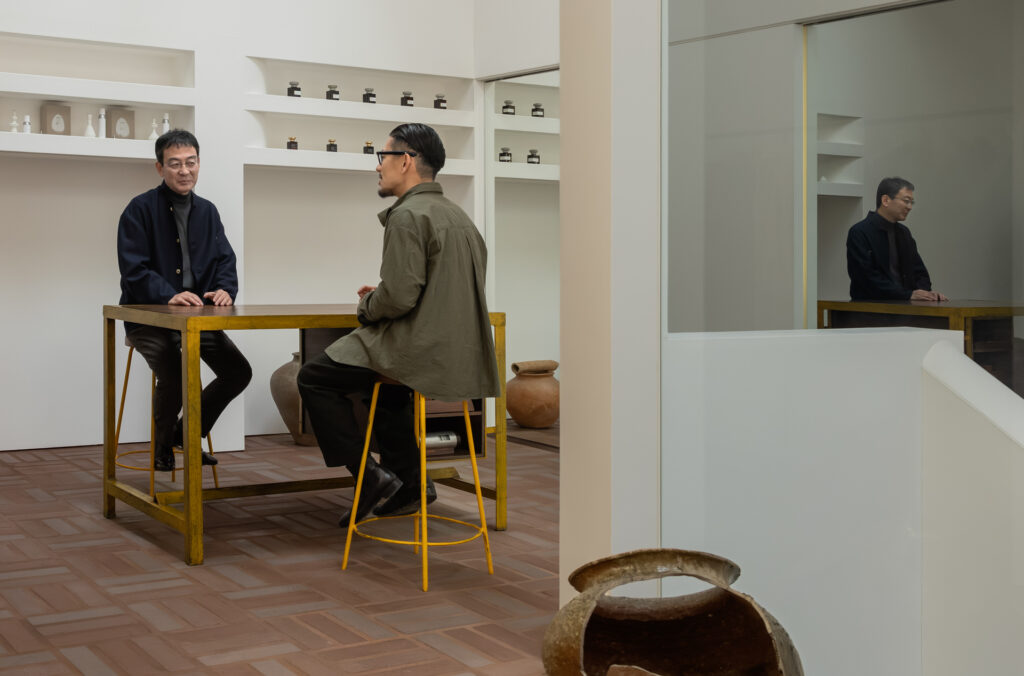
Sakaya: The texture of the leaf is remarkable. Some of these shots were taken using only natural light—or even a single candle—and the way the surface comes alive differs completely between straight lines and curves.
Uchida: Yes, the curved parts catch the highlights beautifully. The leaf we used this time combines 24K gold with platinum, which gives it a more subdued and refined impression.
Sakaya: So that subtle tone comes from the platinum. What first inspired you to incorporate metal leaf?
Uchida: From the very beginning, it was essential that our furniture embody the spirit of Kanazawa. Even before founding Tesera, I had spent over a decade creating works using Ishikawa’s local materials and craft techniques—applying Kaga maki-e lacquer methods without gold to kitchen doors, or collaborating with Wajima-nuri lacquerware and Kaga Yuzen textile artisans. For this design, we wanted to use metal leaf as a quiet accent—elegant, never ostentatious.
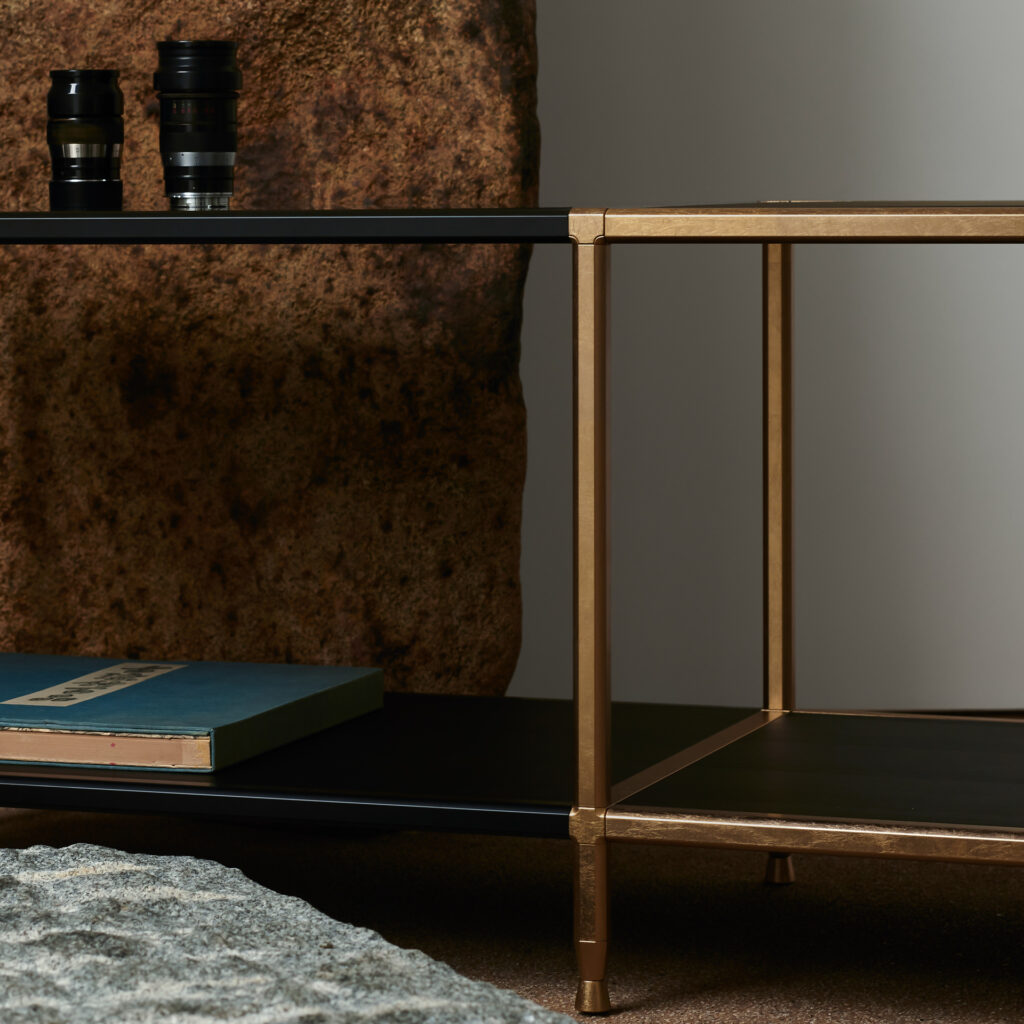
Sakaya: I imagine many business owners and creators are drawn to gold for its auspicious symbolism. That sense of vitality feels present in the piece.
Uchida: Indeed. Gold’s appeal is timeless—it transcends culture. And the craftsmanship required to apply this leaf is extraordinary. In Europe, similar decoration is often achieved more simply with brass, but anyone familiar with the craft will immediately recognize the precision of this Japanese technique.
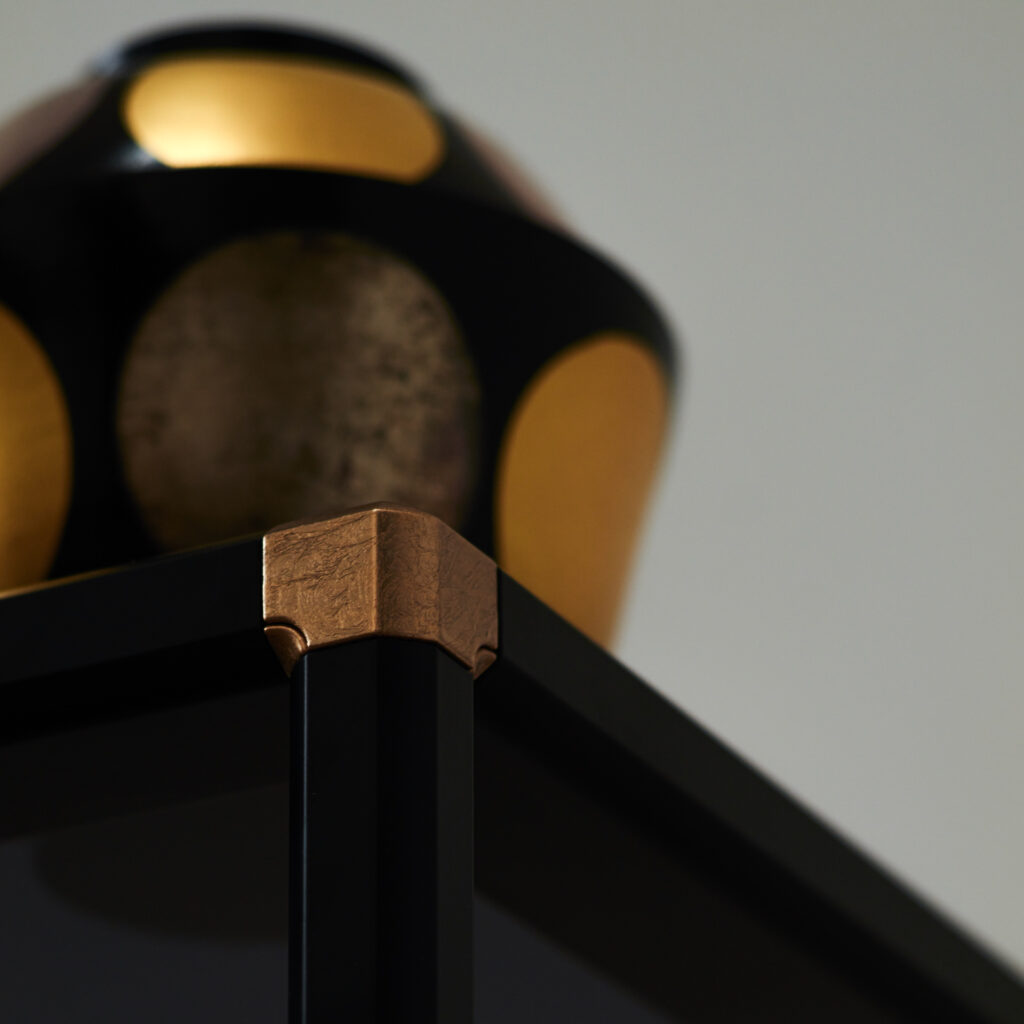
Sakaya: The attention to detail truly stands out—it reveals itself even when you’re not consciously looking for it.
Uchida: That’s what distinguishes our work from built-in or mass-produced furniture. In mass production, curves are standardized into simple radii—5, 10, 15, and so on—for ease of manufacture. At Tesera, we use complex, composite curves refined down to the decimal point. At first glance, the difference may seem small, but it transforms the overall impression. The accumulation of such details gives a sense that a designer’s hand is truly present. As the saying goes, God is in the details—and that’s precisely what we strive for.
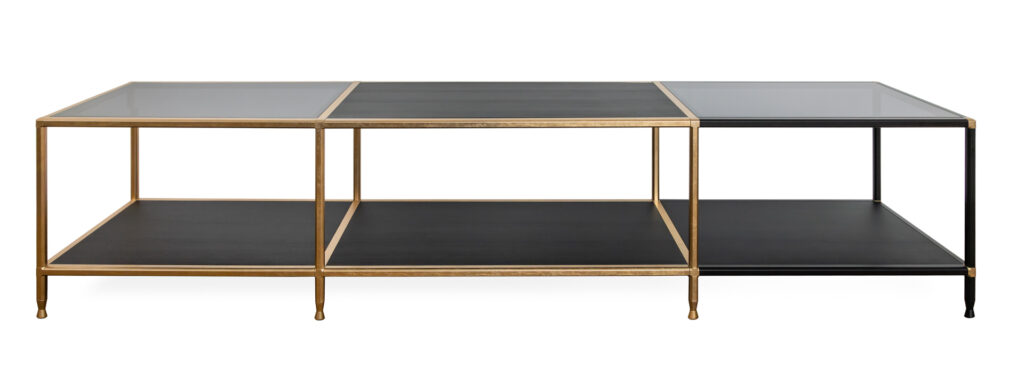
Lowboard
Mr. Dasheng's Favorite Style Edition
W2206 X D450 X H472
